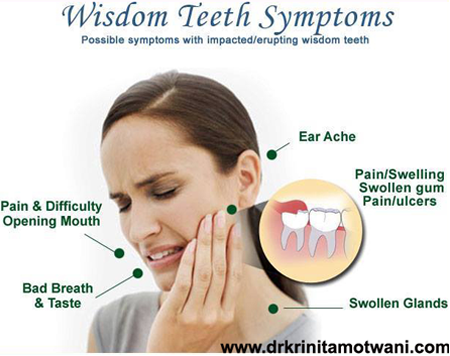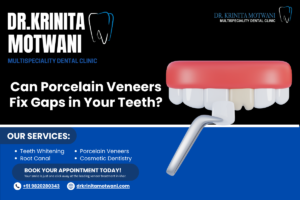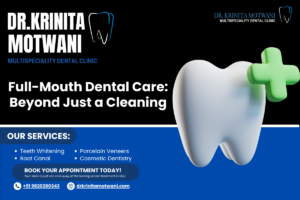With age comes wisdom. Specifically, wisdom tooth
Your mouth goes through many changes in your lifetime. By the age of 18, the average adult has 32 teeth, 16 teeth on the top and 16 teeth on the bottom. Each tooth in the mouth has a specific name and function. The teeth in the front of the mouth (incisors, canine and bicuspid teeth) are ideal for grasping and biting food into smaller pieces. The back teeth (molar teeth) are used to grind food up into a consistency suitable for swallowing.
The average mouth is made to hold only 28 teeth. It can be painful when 32 teeth try to fit in a mouth that holds only 28 teeth. These 4 other teeth are your third molars also known as “wisdom teeth”.
Why are they called wisdom teeth?
Late in the 1600’s, the idea of a common dentistry was advancing and dentists started calling them teeth of wisdom to the public, mainly because this set of molars didn’t grow in until we are about 17 – 24 years old. The rest of our teeth both primary and permanent form prenatally as buds. Wisdom teeth are actually the only teeth that don’t develop until after birth.
What does impacted mean?
When a wisdom tooth is said to be impacted, that means it is blocked from fully erupting through the gums. It’s very common- 85% of wisdom teeth being impacted. The wisdom teeth are not the only type of teeth that may become impacted but it occurs less frequently with other types of teeth.
The level of impaction varies from patient to patient. Some patients have soft tissue impaction in which the tooth has made it through the bone but is still under the gum. Another type of impaction is when part of the tooth has erupted but part of it still stuck in the jawbone. This is known as partial bony impaction. Finally, if the tooth has not erupted out of the jaw at all it is known as a complete or total bony impaction.
Why are impacted wisdom teeth a problem?
Impacted wisdom teeth become a problem when they can pain or affect other teeth. When the tooth cannot erupt upwards as they are supposed to, they can push on nearby teeth. This puts pressure on those teeth and causes pain. This pressure can make the other teeth to shift to make room for the wisdom teeth that are trying to break through. This can impact your smile’s symmetry and make your teeth crooked.
Impacted wisdom teeth are also harder to clean than teeth that are fully erupted, which like in the rest of your teeth, leads to decay. The wisdom teeth are so hard to keep clean because they are in a far back and often hard to reach position in the mouth. Decay is extremely difficult to treat in the wisdom teeth, and most dentists don’t recommend it. If decay is not treated the patient runs the risk of developing infections. Infections of the wisdom teeth are serious and can be hard to treat.
How are wisdom teeth removed?
Wisdom teeth have to be surgically extracted and may involve trimming of the bone. When carefully executed by skilled and experienced doctors it is a very safe and predictable procedure. Once the patient is comfortable, regular local anesthesia is used and the teeth are carefully and delicately removed. The opening left after the extraction is sealed with stitches to avoid any bleeding and ensure healing.
What should I expect after the procedure?
Since the local anesthetic lasts for a few hours after the procedure, very little discomfort is present. By taking the prescribed analgesics at the right time, most patients are able to control the discomfort associated with the procedure very well. Most bleeding is controlled during the intervention and at the end of the procedure cotton gauzes are applied to put pressure on the extraction sites. A minimal oozing is usually present for the first few hours after the surgery and the use of carefully placed cotton gauzes should be sufficient to make it stop. Recovery time as being the end of the symptom of the procedure is approximately 7-10 days. The discomfort tends to wear off after the third day and the swelling usually ends by around the 7th day. Of course the more you ice the wound in the first 48 hours the faster the swelling disappears! For most patients, 3-7 days of analgesic and 5-7 days of antibiotics are sufficient. It is important to remember that even if you are not experiencing any symptoms you must take your medications.
[social_icons_group id=”317″]




